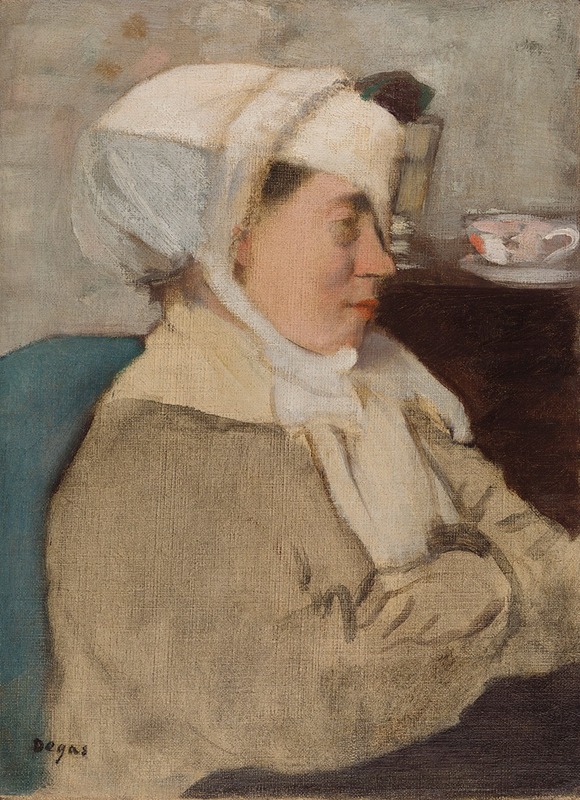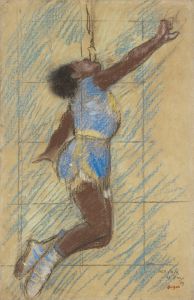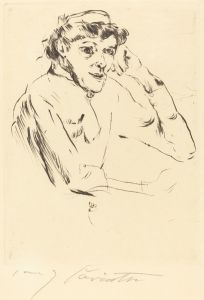
Woman with a Bandage
A hand-painted replica of Edgar Degas’s masterpiece Woman with a Bandage, meticulously crafted by professional artists to capture the true essence of the original. Each piece is created with museum-quality canvas and rare mineral pigments, carefully painted by experienced artists with delicate brushstrokes and rich, layered colors to perfectly recreate the texture of the original artwork. Unlike machine-printed reproductions, this hand-painted version brings the painting to life, infused with the artist’s emotions and skill in every stroke. Whether for personal collection or home decoration, it instantly elevates the artistic atmosphere of any space.
Edgar Degas, a prominent French artist known for his contributions to Impressionism, created a wide array of works that captured the nuances of human form and movement. However, there is no widely recognized painting titled "Woman with a Bandage" attributed to Degas. It is possible that there may be some confusion or misidentification regarding the title or the artwork in question. Degas is renowned for his paintings, sculptures, prints, and drawings, particularly those depicting dancers, women at their toilette, and scenes of Parisian life.
Degas was born on July 19, 1834, in Paris, France, and he demonstrated an early talent for drawing. He initially pursued a legal education but soon shifted his focus to art, studying at the École des Beaux-Arts in Paris. His early works were influenced by the Old Masters, and he spent time in Italy studying classical art. Over time, Degas developed a distinctive style characterized by an interest in capturing fleeting moments and the effects of light and movement.
One of Degas's most famous subjects was the ballet. He created numerous works depicting ballet dancers, both in rehearsal and on stage. These works are celebrated for their dynamic compositions and the way they convey the grace and discipline of the dancers. Degas's interest in movement extended beyond ballet; he also explored themes of horse racing and other forms of physical activity.
In addition to his paintings, Degas was an accomplished sculptor. His most famous sculpture, "Little Dancer of Fourteen Years," is a bronze statue that captures the delicate poise of a young ballet dancer. This work, like many of his paintings, reflects his fascination with the human form and his ability to convey a sense of life and movement.
Degas was associated with the Impressionist movement, although he preferred to be called a "realist" or "independent." He participated in several of the Impressionist exhibitions, but his style was distinct from other Impressionists like Claude Monet and Pierre-Auguste Renoir. Degas's work often featured more structured compositions and a focus on line and form, setting him apart from his contemporaries.
Throughout his career, Degas experimented with various media, including pastels, which he used to create vibrant and textured works. His innovative use of color and composition has had a lasting impact on the art world, influencing generations of artists.
Degas continued to work well into his later years, despite suffering from deteriorating eyesight. He passed away on September 27, 1917, in Paris, leaving behind a rich legacy of art that continues to be celebrated and studied.
While there is no specific information available about a painting titled "Woman with a Bandage" by Edgar Degas, his body of work remains a testament to his skill and creativity. His contributions to art, particularly his ability to capture the essence of movement and the subtleties of human expression, have secured his place as one of the most important artists of the 19th century.


















